When it comes to entertaining, nothing makes a bigger impression than a charcuterie board.
It’s more than just meat and cheese; it’s a celebration of flavors, textures, and colors that your guests can enjoy at their own pace, allowing them to enjoy the festivities.
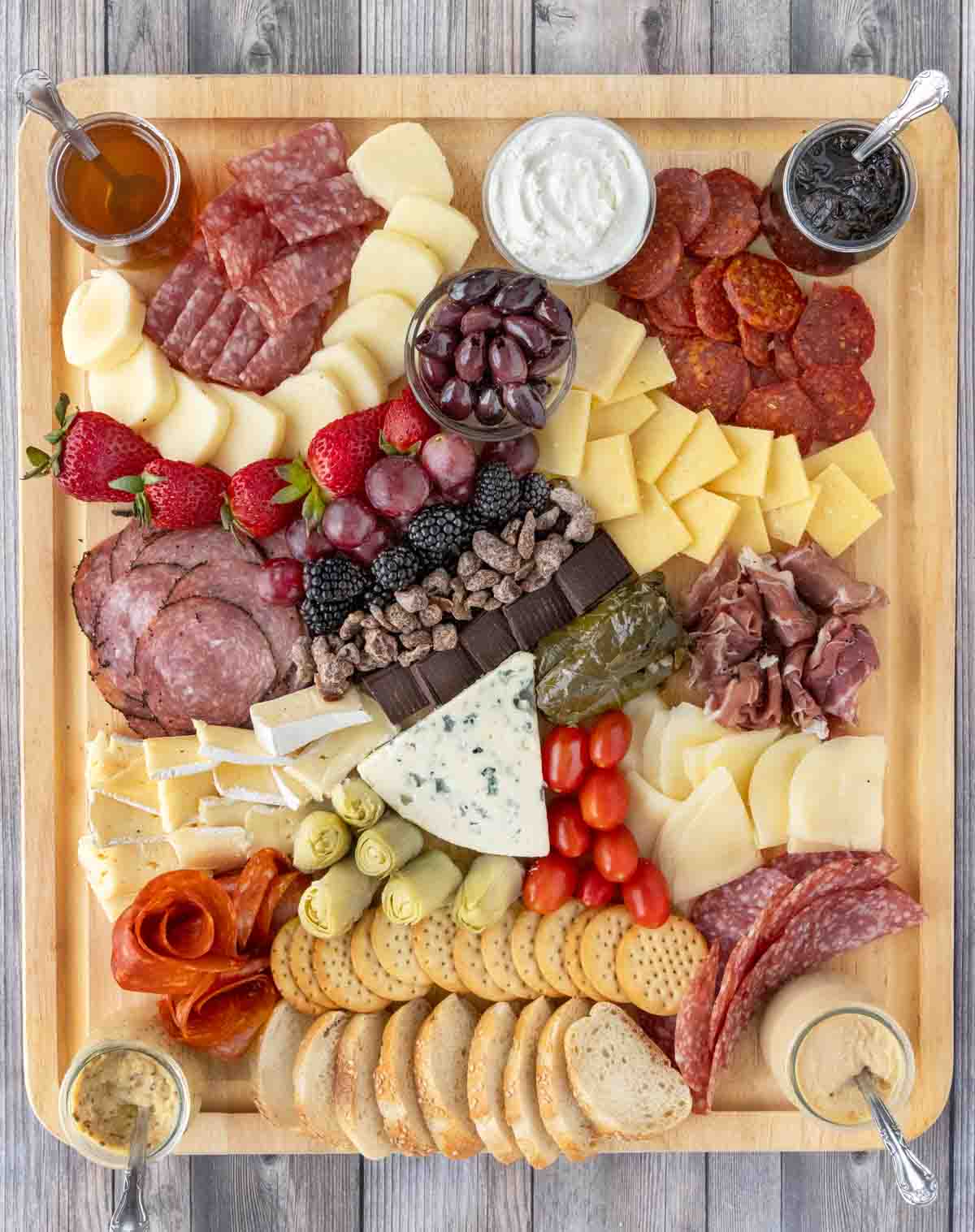
WANT TO SAVE THIS RECIPE?
Audio Player
The beauty of a charcuterie board is its flexibility. You can keep it simple for a casual get-together or go all out with a spread that steals the spotlight at a holiday party.
With a few chef-inspired tips and our charcuterie board ideas, you’ll be building boards that are as beautiful as they are delicious.
How to Make a Charcuterie Board
Creating the perfect balance of flavors and textures isn’t difficult. But like any recipe, there are guidelines. Not rules, but suggestions.
Whether you’re building a basic charcuterie board, a Christmas charcuterie board, a vegetarian charcuterie board, or even a dessert charcuterie board, our definitive guide can help.
Cheese Selection:
Cheese is a critical component of a charcuterie board. Include a mix of textures and strengths.
- Soft Cheese: Goat Cheese, Camembert, and Brie offer a creamy, smooth texture.
- Semi-hard cheeses, such as Gouda, Havarti, or Gruyère, provide a firmer bite.
- Hard Cheese: Aged Cheddar, Parmigiano Reggiano, or Manchego for a robust flavor.
- Blue Cheese: Roquefort, Gorgonzola, or Stilton adds a sharp, tangy contrast.
Always choose an odd number of cheeses (3, 5, or 7) depending on the number of people you’re serving.
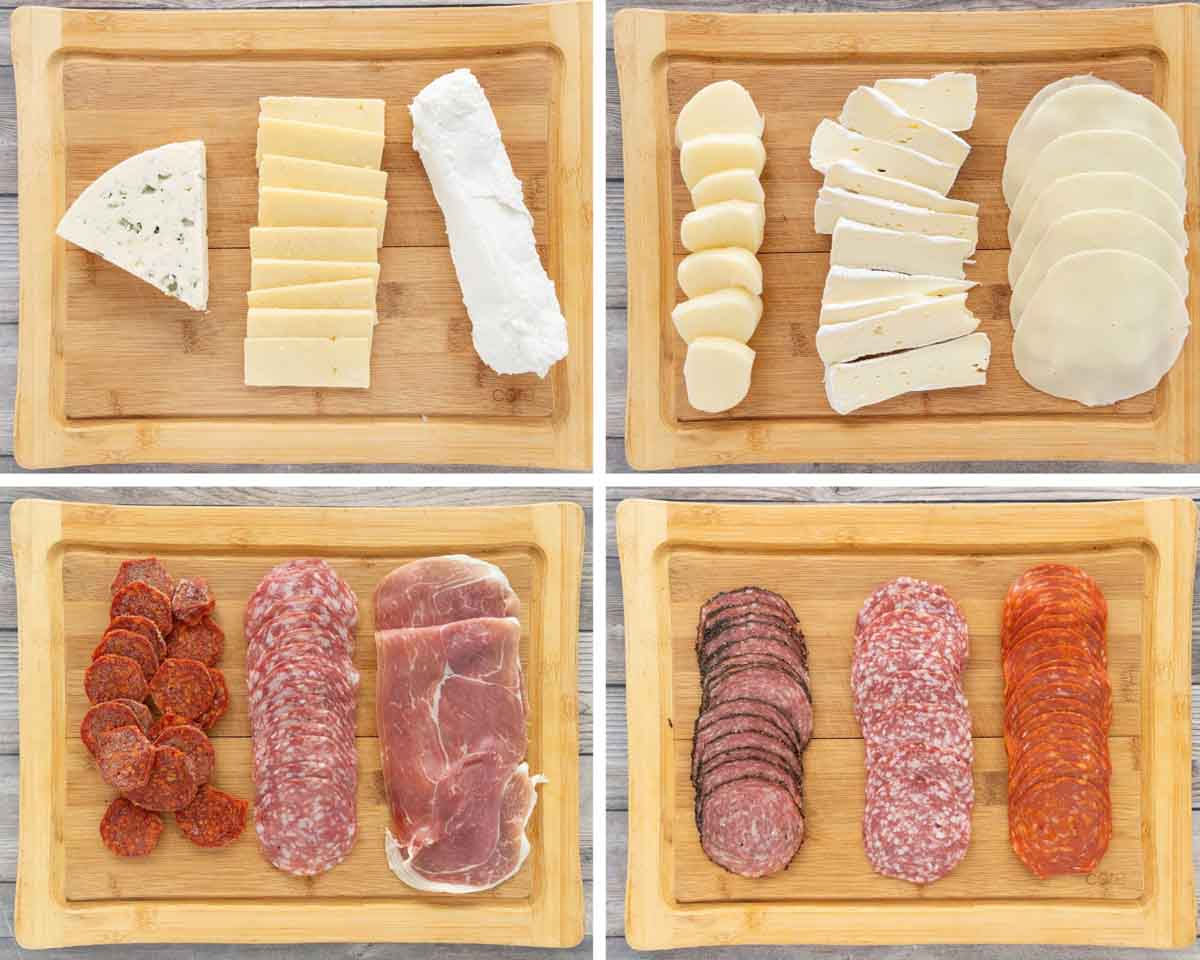
Choosing Meats:
- Prosciutto: A delicate, thinly sliced cured ham that melts in your mouth.
- Salami: opt for both spicy and mild varieties to add depth to your board.
- Capicola: Sweet or hot ham that goes well with mustards and cheese.
- Chorizo: Spiced sausage brings a kick of flavor.
- Paté: A spreadable meat option, such as liver paté, adds richness and variety.
Savory Accompaniments: Dips, spreads, nuts, and veggies will help you round out and balance the flavors on the board.
- Savory Dips and Spreads: Mustards, caponata, tapenade, hummus, sundried tomato pesto, and baba ganoush are good choices.
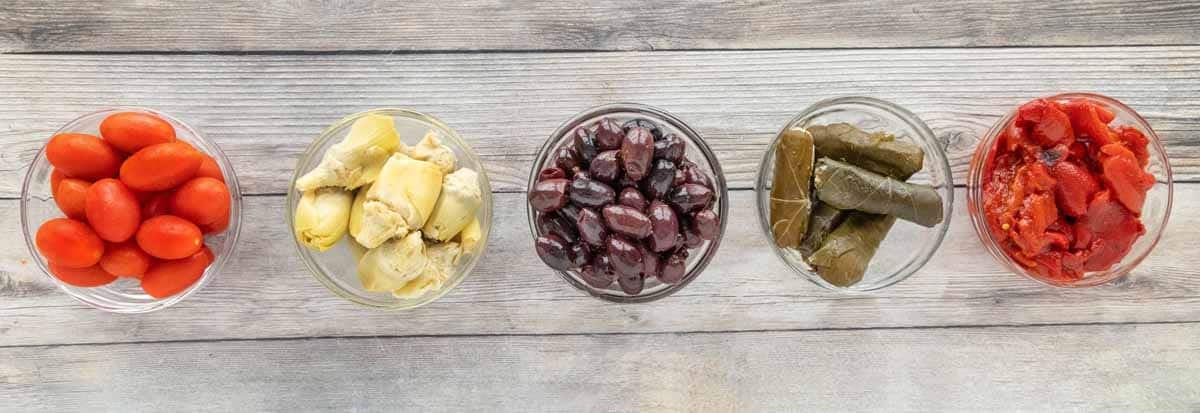
- Pickled and Briny: Kalamata olives, stuffed green olives, sweet gherkins, roasted red peppers, stuffed grape leaves, artichokes, hearts of palm, pickled vegetables, and pepperoncini are all excellent choices.
*Avoid olives with pits; don’t put your guests in an awkward position. - Vegetables: Carrots, celery, cucumbers, radishes, broccoli, and cherry tomatoes will add a fresh crunch to the selection.
Sweet Accompaniments: Balancing the board with a few sweet selections is essential to creating the perfect charcuterie board.

- Fresh Fruit: Apples, pears, oranges, melons, pineapple, grapes, and strawberries are not only delicious nibbles, but they also add color and complement cheese. Smaller berries will make a beautiful presentation, but will be hard to pick up. Stay away from peaches, nectarines, and plums; they’re really juicy and not worth the mess they’ll make.
- Dried Fruit: Dried fruits can be used, but aren’t always the best choice (depending on what type of board you’re building). If you do use dried fruit, go with pineapple, figs, mangoes, and apricots. They’ll be easier to pick up.
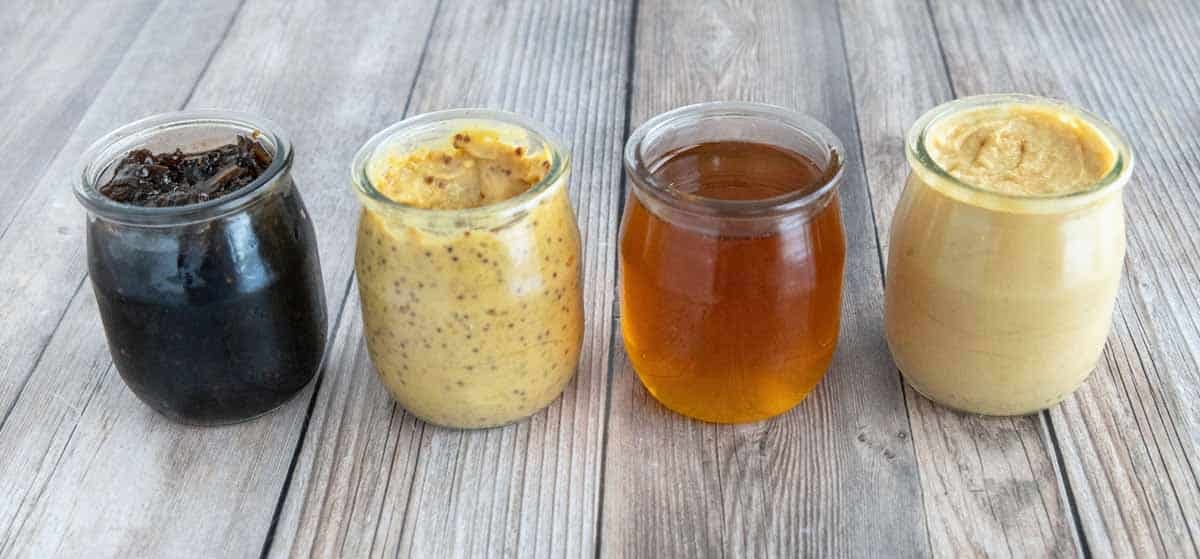
- Jams and Spreads: Sweet and savory spreads are the perfect addition to the board. They’ll add flavors that complement the meats, cheeses, and fruits you use. They will also make a nice spread for any crackers or bread you add.
Fruit Preserves, honey, or jams, such as our blackberry jam and fig jam, will make great additions. Savory jams, such as tomato jam, bacon jam, and onion jam, are all excellent choices.
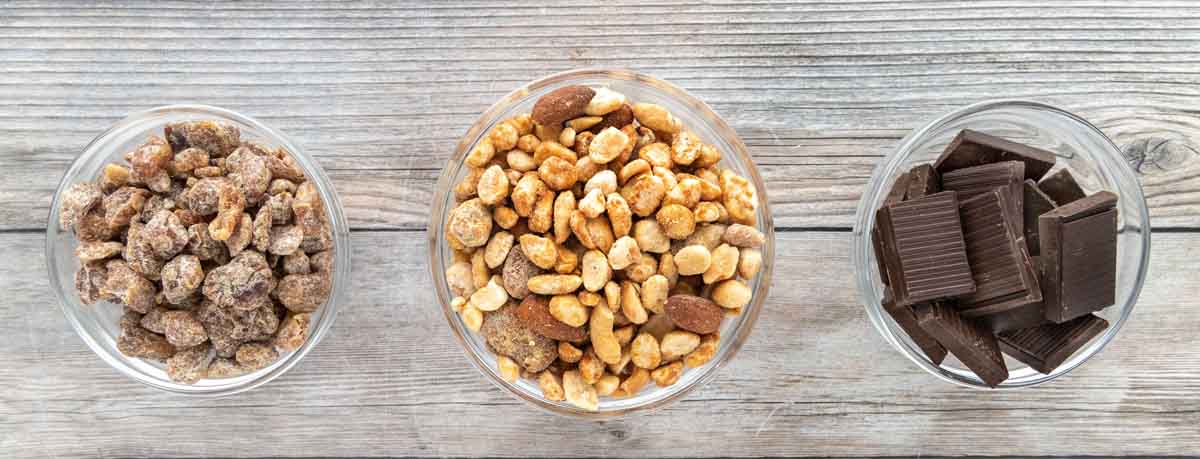
- Chocolate: Chocolate may not always have a spot on your board, but small wrapped chocolates, or chocolate-covered nuts and dried fruits can be added.
- Nuts: Candied Pecans, macadamia nuts, almonds, and pistachios are delicious additions and help fill in empty areas.
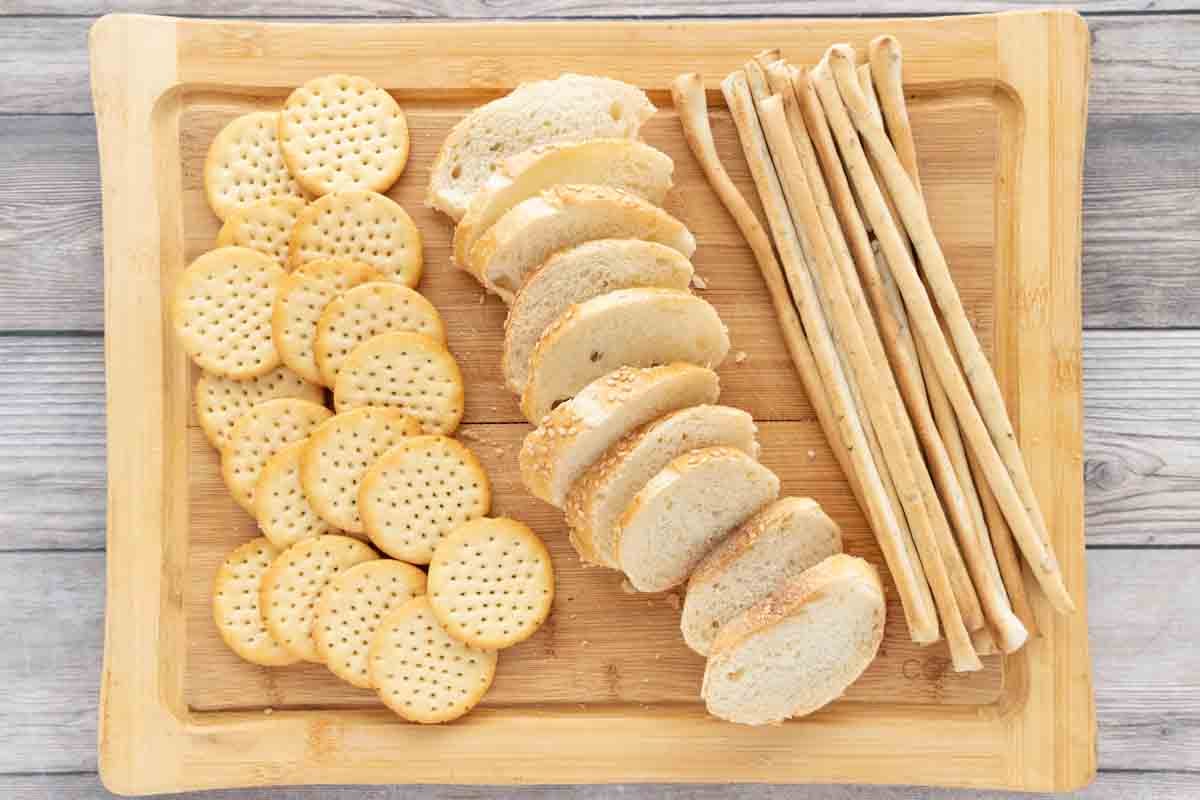
Breads and Crackers: A variety of breads and crackers will enhance the selections.
- Assorted Crackers and Breadsticks: Choose plain, seeded, and flavored varieties to complement your other ingredients.
- Baguette: Thinly sliced and toasted for a crunchy base.
- Crostini: Small, crisp toast brushed with olive oil.
- Pita chips: Perfect for dipping.
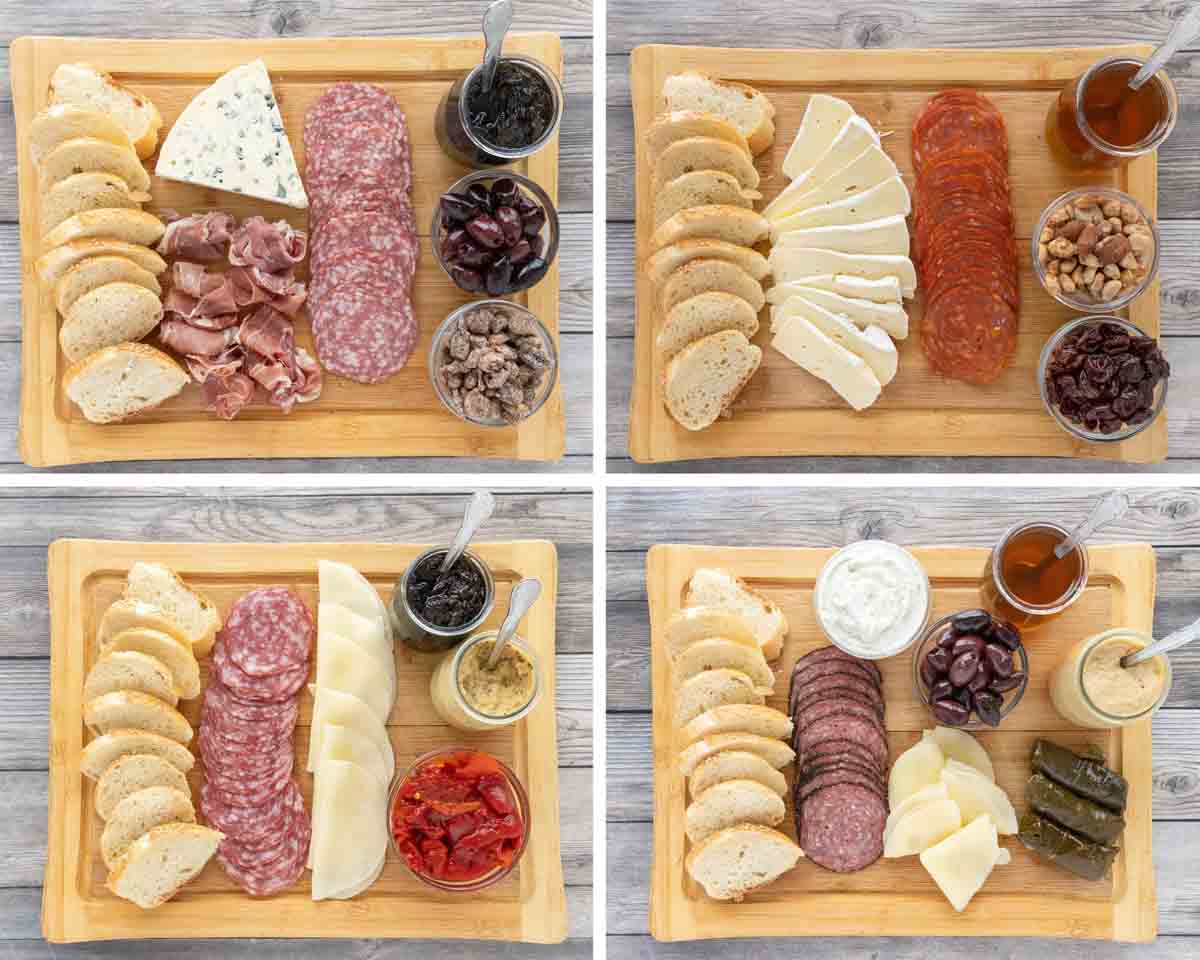
These are examples of a basic charcuterie board.
Mix and match the different elements with various shapes and sizes. Variety will help create depth and help you come up with your own charcuterie board ideas.
Chef Tips
- Use a mix of colors and textures to make the board visually appealing.
- Slice some cheese, but leave a wedge whole for variety.
- Roll or fold cured meats for height and interest.
- Place small bowls for spreads, olives, or nuts to add structure.
- Always serve cheeses at room temperature for the best flavor.
Assembly Tips:
The visual appeal of your charcuterie board is just as important as the ingredients.
- Board Selection: Use a wooden cutting board, marble slab, or a large platter as your base. You can also place parchment paper on the counter and build directly on the counter or on a table.
- Arrangement: Start with the larger items, such as cheeses and meats, then fill in the gaps with fruits, nuts, and crackers.
- Distributing colors and textures evenly over the board creates a visually appealing design.
- Variety: Make sure a mix of flavors and textures is present in every section of the board.
- Tools: Provide cheese knives, small tongs, and spoons for easy serving.
Pairing Suggestions:
Enhance the experience with beverages that complement the selections.
- Wine: A crisp white wine, a robust red, a rosé, or a sparkling wine can pair wonderfully with different elements of the charcuterie board.
- Beer: Light lagers, rich stouts, or fruity ales offer versatile pairing options.
- Non-Alcoholic: Sparkling water, flavored sodas, or fresh juices can be refreshing alternatives.
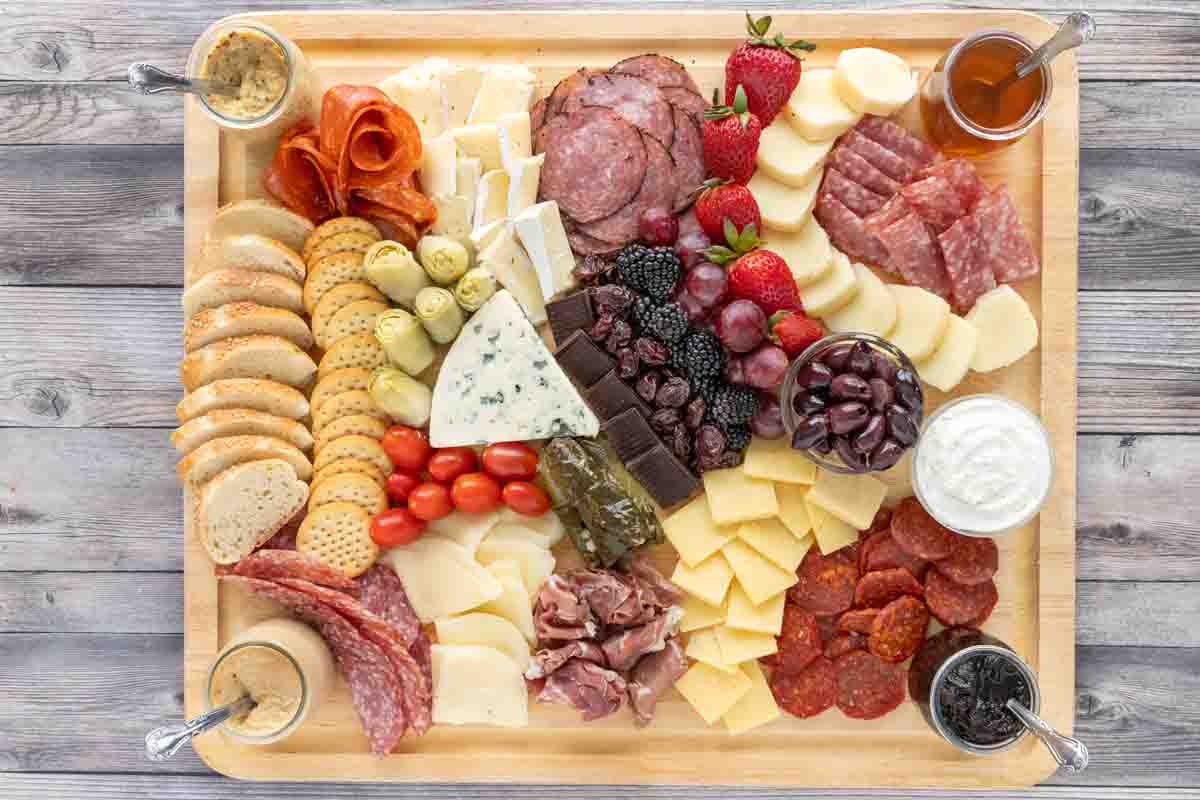
A charcuterie board isn’t just about the food; it’s about the experience. That first look as your guests start to mingle, then the first taste, with the promise of more to come.
With the right balance of flavors, textures, and colors, you’ll wow your guests every time. Whether it’s a casual gathering or a holiday celebration, a properly constructed grazing board makes entertaining easy, fun, and absolutely delicious. Trust me, once you start making charcuterie boards, you’ll find excuses to put one together every time you have friends or family stopping by.
Charcuterie Board Ideas
- Mediterranean Board: Add hummus, feta, marinated peppers, and pita chips.
- Breakfast Charcuterie Board: Build a board with smoked salmon, bagels, cream cheese, fresh fruit, and pastries.
- Sweet Board: Use chocolates, cookies, fruit dips, and candied nuts.
- Vegetarian Board: Feature roasted veggies, plant-based cheeses, and hearty dips.
- Christmas Charcuterie Board: Add holiday-themed items like cookies, candy canes, chocolates, tangerines, and pomegranates.
Storage Tips
- Meats and Cheese: Store refrigerated in airtight containers for 3-4 days.
- Crackers & Bread: Store at room temp in a sealed bag or container.
- Fruit: Best eaten fresh, but citrus and apples can be stored in the fridge for 1–2 days.
- Jams and Spreads: Should be stored refrigerated in a well-sealed container for up to 7 days.
Recipe FAQs
A charcuterie is a spread of cured meats, cheeses, fruits, nuts, and accompaniments arranged on a serving board. It’s designed for grazing and makes an impressive appetizer or centerpiece for entertaining.
.
Plan on serving approximately 3–4 ounces of meat and 2–3 ounces of cheese per person. If it’s your main course, consider bumping that up slightly so no one leaves hungry.
Yes, you can. You can assemble the board up to 8 hours in advance. Keep it covered and refrigerated until ready to serve. Remove it 30 minutes before serving so the cheese can reach room temperature for optimal flavor.
No, you don’t. A wooden cutting board looks beautiful, but you can use a platter, tray, marble slab, or even parchment paper on a counter or table. It’s more about presentation and balance than the actual board
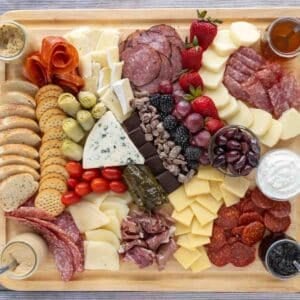
How to Build a Charcuterie Board (Definitive Guide)
Equipment
- cutting board, marble, or platters
Ingredients
Estimated amounts
- 8 oz proscuitto or Jamon Serrano
- 8 oz Genoa salami
- 8 oz capicola hot or sweet
- 8 oz smoked sausage chorizo or your favorites
- 6 oz sharp cheddar cheese Parmigiano Reggiano, or Manchengo.
- 6 oz gorgonzola bleu cheese, roquefort, or stilton.
- 6 oz goat cheese Camembert, or Brie
- 6 oz Gouda Havarti, or Gruyère
- 6 oz kalamata olives
- 6 oz stuffed green olives
- 6 oz grape tomatoes carrots, celery, broccoli
- 6 oz hearts of palm suffed grape leaves
- 2 boxes crackers breadsticks, melba
- 2 loaves sliced baguette or crostini
- 6 oz honey or flavored butter
- 6 oz onion jam caponata, tapenade, baba ganoush, hummus
- 6 oz fig jam
- 6 oz dijon mustard or stone ground, or dips
- 8 oz strawberries pineapple, apple, pears
- 6 oz blackberries or dried fruit
- 6 oz grapes
- 6 oz dark chocolate chocolate covered fruits or nuts
- 8 oz candied nuts or pecans, hazelnuts, macadamia nuts, pistachios
WANT TO SAVE THIS RECIPE?
Instructions
Board Selection
- Use a wooden cutting board, marble slab, or a large platter as your base. You can also place parchment paper on the counter and build directly on the counter or on a table.
- Start with the larger items, such as cheeses and meats, then fill in the gaps with fruits, nuts, and crackers.
- Provide cheese knives, small tongs, and spoons for easy serving.
Notes
- Prosciutto: A delicate, thinly sliced cured ham that melts in your mouth.
- Salami: opt for both spicy and mild varieties to add depth to your board.
- Capicola: Sweet or hot ham that goes well with mustards and cheese.
- Chorizo: This spiced sausage brings a kick of flavor.
- Paté: A spreadable meat option, such as liver paté, adds richness and variety.
- Soft Cheese: Goat Cheese, Camembert, and Brie offer a creamy, smooth texture.
- Semi-hard cheeses, such as Gouda, Havarti, or Gruyère, provide a firmer bite.
- Hard Cheese: Aged Cheddar, Parmigiano Reggiano, or Manchego for a robust flavor.
- Blue Cheese: Roquefort, Gorgonzola, or Stilton adds a sharp, tangy contrast.
- Baguette: Thinly sliced and toasted for a crunchy base.
- Crostini: Small, crisp toast brushed with olive oil.
- Assorted Crackers and Breadsticks: Choose plain, seeded, and flavored varieties to complement your other ingredients.
- Fresh Fruits: Grapes, larger berries, apple slices, and figs provide sweetness and juiciness.
- Dried Fruits: Apricots, dates, figs, and pineapple offer concentrated sweetness.
- Vegetables: Include pickles, olives, stuffed grape leaves, and cherry tomatoes for acidity and crunch.
- Mixed Nuts: Sugared pecans, almonds, walnuts, and pistachios add a satisfying crunch.
- Spreads: Include honey, jams, and mustards to pair with meat and cheeses.
- Chocolate: Dark chocolate pieces, small wrapped chocolates, and chocolate-covered fruit can add a surprising and delightful twist.
- Mediterranean Board: Add hummus, feta, marinated peppers, and pita chips.
- Breakfast Charcuterie: Swap meats for smoked salmon, bagels, cream cheese, fruit, and pastries.
- Sweet Board: Use chocolates, cookies, fruit dips, and candied nuts.
- Vegetarian Board: Feature roasted veggies, plant-based cheeses, and hearty dips.
- Christmas Charcuterie Board: Add holiday-themed items like cookies, candy canes, chocolates, tangerines, and pomegranates.
- Board Selection: Use a wooden cutting board, marble slab, or a large platter as your base.
- Arrangement: Start with the larger items like cheeses and meats, then fill them in with fruits, nuts, and crackers.
- Distributing colors and textures evenly over the board creates a visually appealing design.
- Variety: Ensure there is a mix of flavors and textures in every section of the board.
- Tools: Provide cheese knives, small tongs, and spoons for easy serving.
- Wine: A crisp white wine, a robust red, a rosé, or a sparkling wine can pair wonderfully with different elements of the charcuterie board.
- Beer: Light lagers, rich stouts, or fruity ales offer versatile pairing options.
- Non-Alcoholic: Sparkling water, flavored sodas, or fresh juices can be refreshing alternatives.
- Extra Sharp White Cheddar – Apples, pears, strawberries, grapes, figs, cherries, apricots, olives, chutney, mustards, pickles, and chorizo.
- Blue Cheese – Figs, pears, grapes, cherries, apples, dates, apricots, olives, cashews, and prosciutto.
- Goat Cheese – Prosciutto, salami, strawberries, figs, pears, apples, grapes, apricots, cherries, and olives.
- Parmiagano Reggiano- Strawberries, figs, prosciutto, dried apricots, sesame sticks, olives, and balsamic glaze.
- Gouda – Blackberries, grapes, dried apricots, apples, pears, cherries, figs, pecans, walnuts, pickles, and salami.
- Havarti – Soppressata, apples, pears, cherries, olives, pickles, and crackers.
- Feta – Pears, kalamata olives, green olives, watermelon, figs, strawberries, apples, grapes, cantaloupe, and prosciutto.
- Mozzarella – Tapanades, tomatoes, strawberries, apples, salty meats, and olives.
- Camembert – flavored crackers, assorted nuts, apples, pears, grapes, chocolate, jams (savory and sweet).

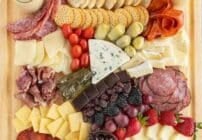
Leave a Comment